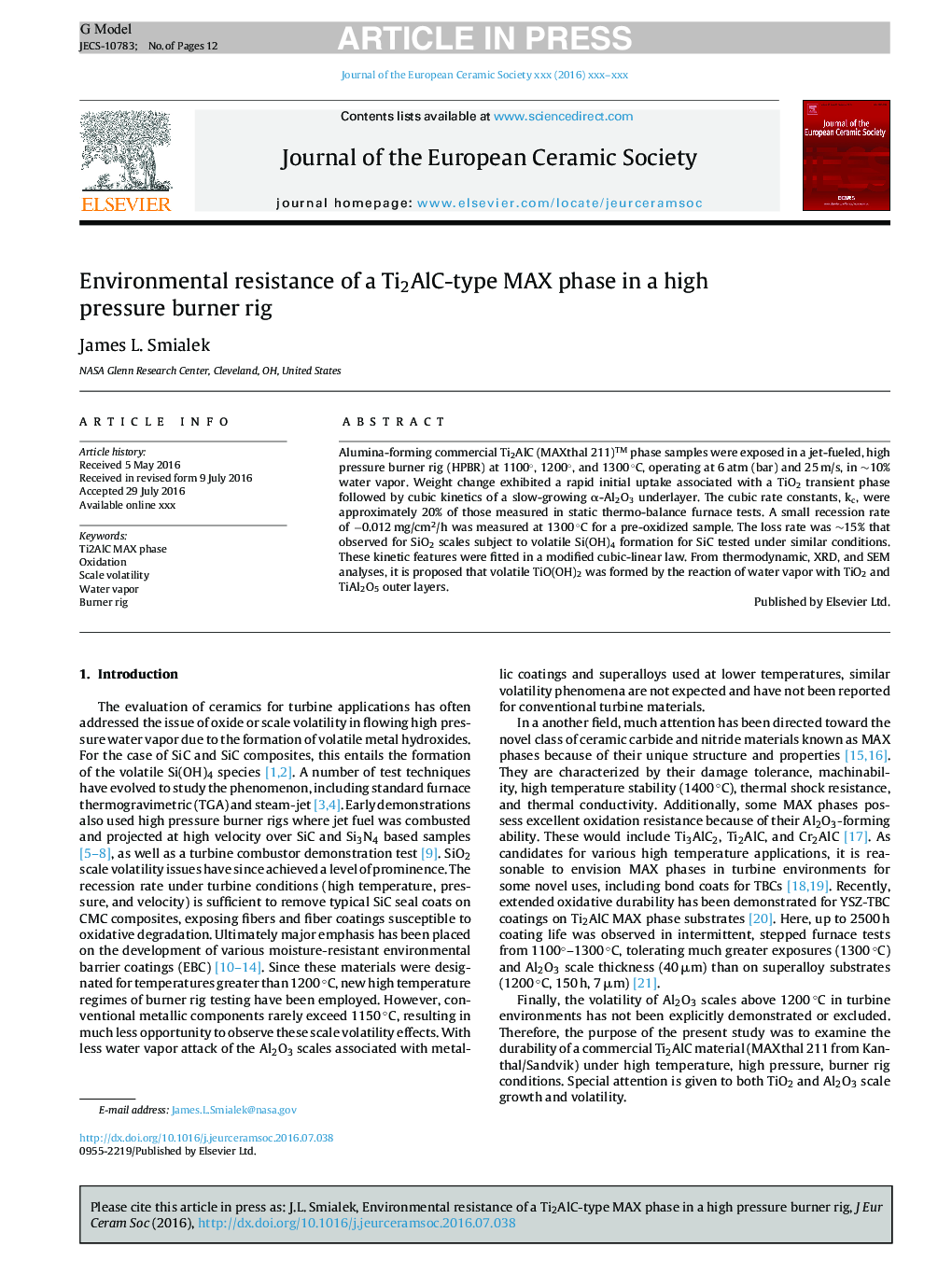| Article ID | Journal | Published Year | Pages | File Type |
|---|---|---|---|---|
| 5440840 | Journal of the European Ceramic Society | 2017 | 12 Pages |
Abstract
Alumina-forming commercial Ti2AlC (MAXthal 211)⢠phase samples were exposed in a jet-fueled, high pressure burner rig (HPBR) at 1100°, 1200°, and 1300 °C, operating at 6 atm (bar) and 25 m/s, in â¼10% water vapor. Weight change exhibited a rapid initial uptake associated with a TiO2 transient phase followed by cubic kinetics of a slow-growing α-Al2O3 underlayer. The cubic rate constants, kc, were approximately 20% of those measured in static thermo-balance furnace tests. A small recession rate of â0.012 mg/cm2/h was measured at 1300 °C for a pre-oxidized sample. The loss rate was â¼15% that observed for SiO2 scales subject to volatile Si(OH)4 formation for SiC tested under similar conditions. These kinetic features were fitted in a modified cubic-linear law. From thermodynamic, XRD, and SEM analyses, it is proposed that volatile TiO(OH)2 was formed by the reaction of water vapor with TiO2 and TiAl2O5 outer layers.
Keywords
Related Topics
Physical Sciences and Engineering
Materials Science
Ceramics and Composites
Authors
James L. Smialek,
